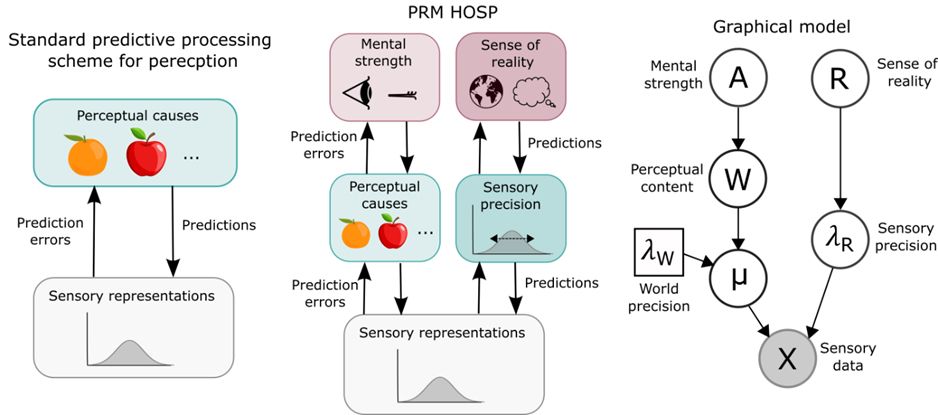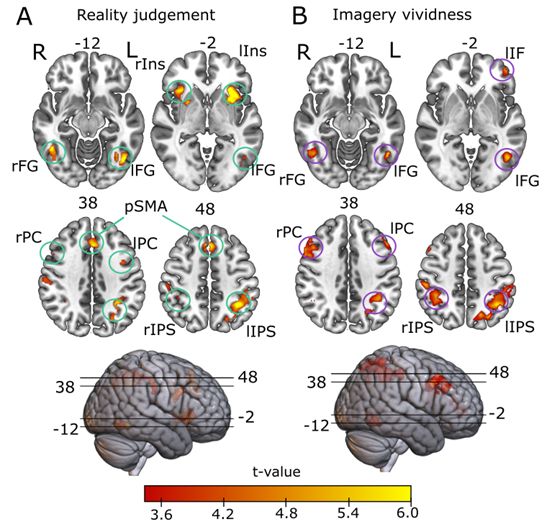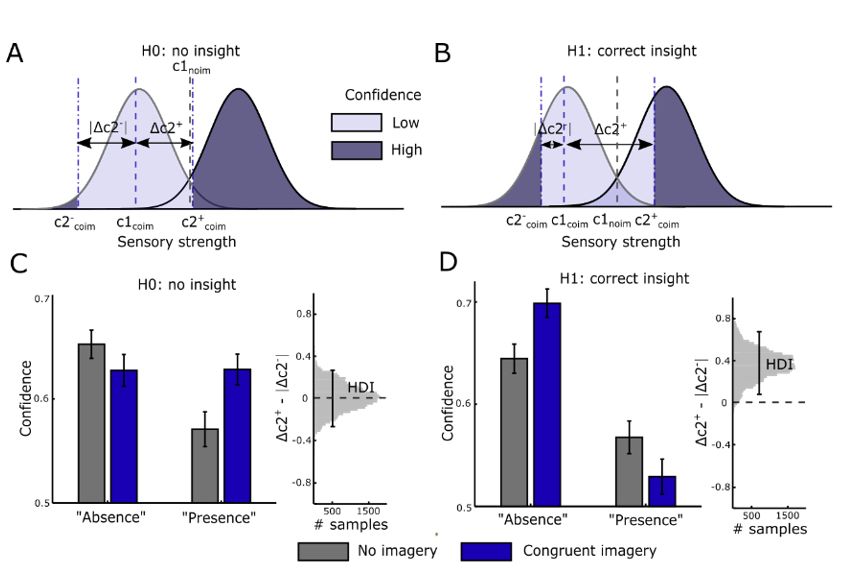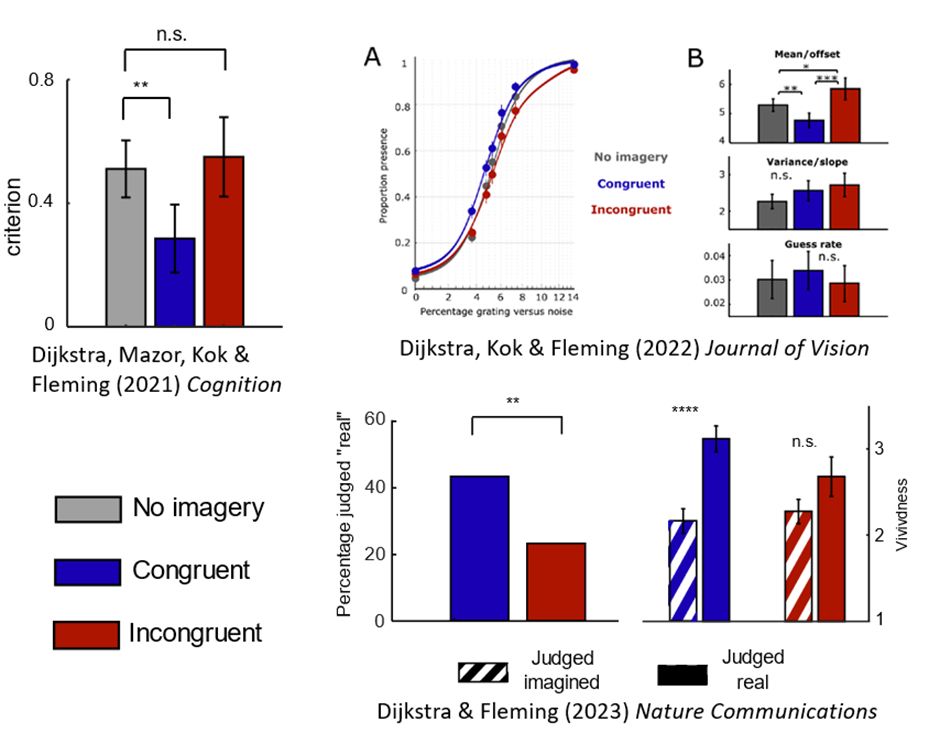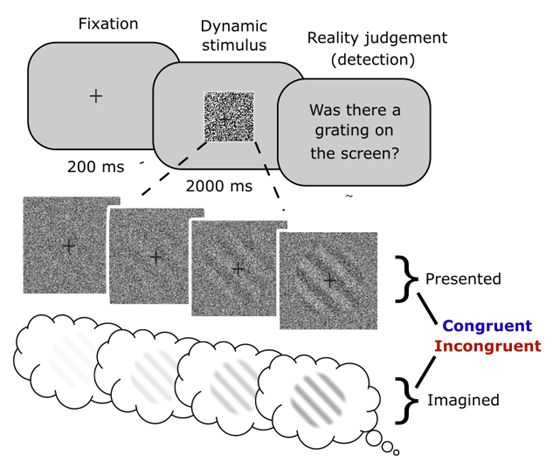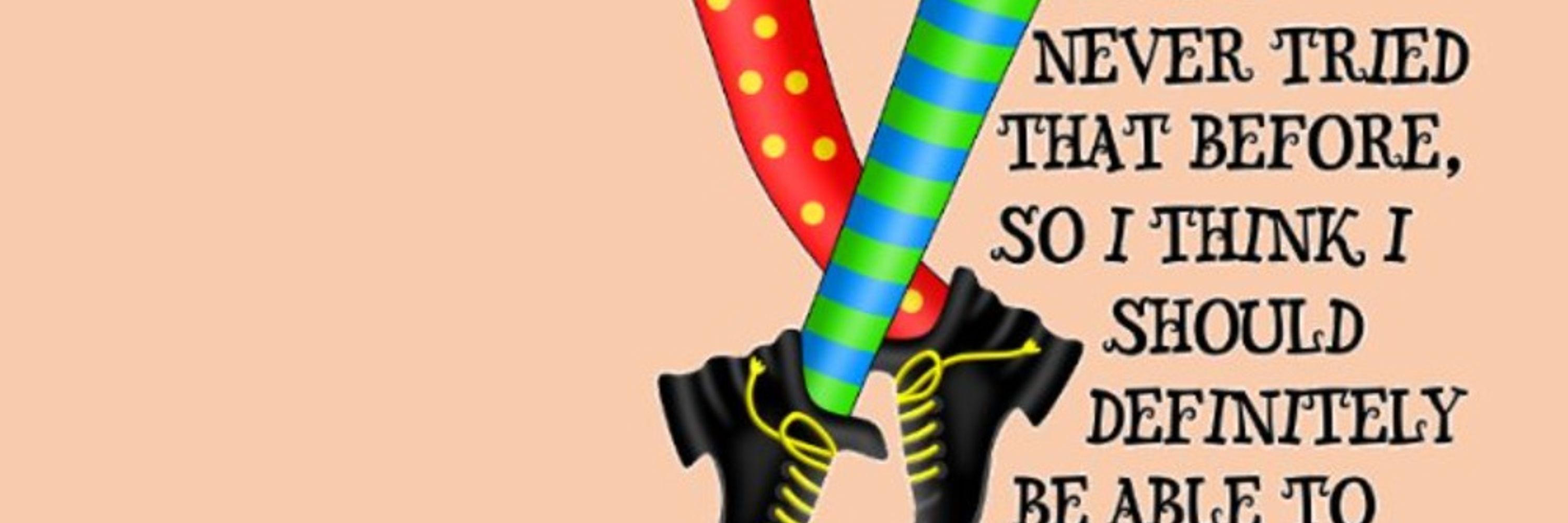
P6.36 | Pre-stimulus Shape Predictions Fluctuate At Alpha Rhythms And Bias Subsequent Perception.
Showing how content-specific pre-stimulus alpha-band oscillations influence perception.

P6.36 | Pre-stimulus Shape Predictions Fluctuate At Alpha Rhythms And Bias Subsequent Perception.
Showing how content-specific pre-stimulus alpha-band oscillations influence perception.
I will show a series of experiments on higher-order monitoring for distinguishing imagination and perception.


I will show a series of experiments on higher-order monitoring for distinguishing imagination and perception.
P3.48 | The Influence Of Scene Context On Perceptual Reality Monitoring
Presenting preliminary results that suggest that imagery is more vivid and more likely to be confused for perception within congruent scene contexts.

P3.48 | The Influence Of Scene Context On Perceptual Reality Monitoring
Presenting preliminary results that suggest that imagery is more vivid and more likely to be confused for perception within congruent scene contexts.
To kick us off, on Tuesday at 15:30, Martha Cottam will present:
P2.12 | Presence Expectations Modulate the Neural Signatures of Content Prediction Errors


To kick us off, on Tuesday at 15:30, Martha Cottam will present:
P2.12 | Presence Expectations Modulate the Neural Signatures of Content Prediction Errors



